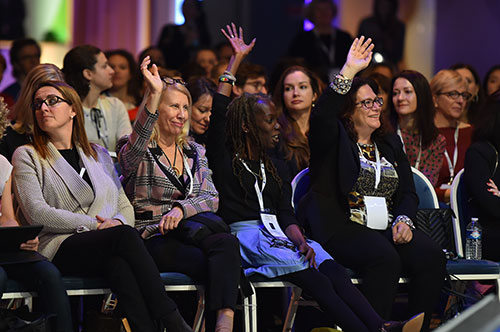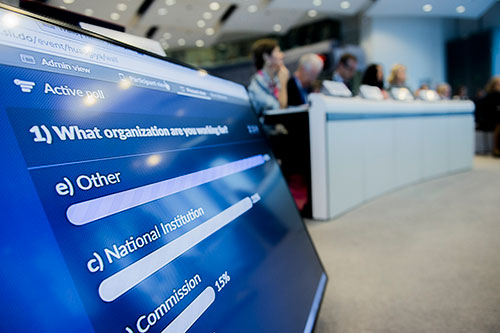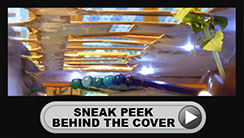
Photo courtesy of Women's Forum for Economy and Society
By Claire Doole, Claire Doole Communications
The audience is king in communications. Whether giving a presentation, talking to the media, or writing a document, who matters most is the viewer, listener or reader. What do you want them to do, feel or say as a result of your communications?
How strange this is too often forgotten when organising a conference.
I am sure you have attended conferences where death by PowerPoint was a real possibility or panel discussions where the moderator runs out of time for the Q and A session with the audience.
Have a read of this article by Guardian journalist, Duncan Green, entitled "Conference rage: How did awful panel discussions become the default format?"
He says, "a badly run conference is not only a lost opportunity, but a waste of time. How can we improve them?"
He gives a lot of good ideas, but doesn't mention how technology can really make a difference, putting the audience back in the driving seat.
Interactive web applications - the moderator's friend.
This year, I have moderated or acted as Master of Ceremonies at a number of events organised by companies, trade federations and international organisations. Many of them used web applications, which asked the audience to give their view on the subject under discussion or as a way to take questions or comments during the Q and A.
Two of the most popular apps are wisembly.com and slido.com. They promise amazing conversations, using a collaborative platform to maximise interaction at events and meetings.
So how do they work?
The audience downloads the app on their tablet or IPhone, put in the event code and then can ask questions during the Q and A session or take part in "real time" polls. The results appear on a screen in the room.
Many people feel nervous asking a question, especially if not in their native language. They prefer the more anonymous way of asking digitally. The only disadvantage is that the moderator has to understand the question or comment, especially difficult if it includes acronyms. It has to be made clear also who on the panel should respond and of course the moderator can't check back for clarification with the questioner.
However, the part I really like is that the event organisers can ask the audience questions before the panel discussion. The responses appear on the screen within a minute. It is like getting the election results in real time.
Have a watch of this video from slido.com:
As the Master of Ceremonies at the Future of Europe's Finances Conference in Brussels, I used it firstly to find out who was in the room. We provided a list: European Commission officials, industry, academics, or other.
In retrospect, NGOs should have had their own category and not been relegated to "other". The NGO's were quick to tell us that on Twitter - the advantage of a two-way social media conversation!

Slido in use at the Future of Europe's Finance Conference, Brussels, photo © Ezequiel Scagnetti
We then went on to ask more specific questions.
The moderator can use the results of a survey in a number of ways either by using the answers to start the panel discussion or refer to them during the discussion. You can also use the survey questions as a transition technique between panels, particularly useful as people leave and come on to the platform.
If you are really brave, you can use the word wall. This is where you ask people to write the word that they most associate with the conference. You show the results at the end. Of course the moderator/MC has to go with the flow if some of the words are not those the organisers expected!
At every event where I have used these applications, the audience has responded with genuine enthusiasm. They create a buzz and make the audience feel that they are really part of the event, restored to their rightful position as event royalty.
Author's bio
 Claire is a former BBC correspondent and international spokeswoman who is passionate about helping people communicate with confidence. Since 2006, she has successfully trained hundreds of professionals in the art of presenting and public speaking, talking to the media, managing communications in a crisis, and writing for the web. In addition, she has coached C-level executives and public figures to give powerful TEDx and TED style talks in Europe and the Middle East. A Swiss and UK national, Claire trains and coaches in French and English.
Claire is a former BBC correspondent and international spokeswoman who is passionate about helping people communicate with confidence. Since 2006, she has successfully trained hundreds of professionals in the art of presenting and public speaking, talking to the media, managing communications in a crisis, and writing for the web. In addition, she has coached C-level executives and public figures to give powerful TEDx and TED style talks in Europe and the Middle East. A Swiss and UK national, Claire trains and coaches in French and English.
Claire is also a highly experienced moderator having facilitated panel discussions with government ministers, NGO activists, humanitarians and human rights specialists at major events.








